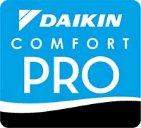
The Triple Threat: How Extreme Heat Targets Critical AC Components in Chandler, Arizona
Living in Chandler, Arizona means you have to deal with some of the most extreme temperatures in the country. When summer temperatures regularly get above 115°F and stay elevated for months on end, your air conditioning system faces challenges that units in colder parts of the country never encounter. Understanding why Arizona’s brutal heat causes AC components to break down faster than elsewhere can help you better maintain your unit and avoid costly emergency repairs.
The Unique Challenge of Desert Heat
Chandler’s climate creates a perfect storm of conditions that stress air conditioning systems beyond their typical design limits. Systems in the Phoenix Valley run continuously for months, often cycling on and off throughout the night even when outdoor temperatures remain above 90°F.
This constant operation, combined with drastic temperature differentials between indoor and outdoor environments, puts tremendous strain on every component of your AC system.
There are always unique situations and problems, however, there are typically three critical components on an AC unit that tend to fail — evaporator coils, refrigerant systems, and capacitors. Whether or not those components require maintenance, repair or replacement, we’re here to help you make an informed decision.
Leaky Coils: When Desert Heat Meets Metal Fatigue
Your air conditioner’s evaporator and condenser coils are essentially heat exchangers made of copper or aluminum tubing. In Chandler’s extreme heat, these coils face unprecedented thermal stress that can lead to premature failure.
The Science Behind Coil Failure
When outdoor temperatures exceed 115°F, the temperature differential between your cool indoor air (approximately 75°F) and the scorching outdoor environment creates extreme thermal expansion and contraction. This constant cycle of heating and cooling causes the metal coils to expand and contract repeatedly, leading to:
- Metal fatigue — The repeated stress weakens the coil material over time
- Joint separation — Soldered connections can fail under thermal stress
- Corrosion acceleration — High temperatures speed up oxidation processes
- Vibration damage — Extended runtime increases wear on coil connections
Why This Matters More in Arizona
In moderate climates, AC systems might run 8-12 hours during peak summer days. In Chandler, systems often run 16-20 hours daily from May through October. This extended operation multiplies the thermal stress cycles, causing coil failures that might take 10-15 years to develop in other regions to occur in just 5-7 years.
When coils develop leaks, your system loses cooling capacity, energy efficiency plummets, and you’ll notice higher utility bills and inconsistent cooling throughout your home.
Refrigerant Leaks: High Heat’s Impact on System Pressure
Refrigerant is the lifeblood of your air conditioning system, and Chandler’s extreme temperatures create conditions that significantly increase the likelihood of refrigerant leaks.
How Heat Affects Refrigerant Systems
Arizona’s intense heat affects refrigerant systems in several ways:
Increased System Pressure: When outdoor temperatures exceed 110°F, refrigerant pressures can reach dangerous levels. High-pressure conditions stress seals, gaskets, and connection points throughout the system, making leaks more likely.
Seal Degradation: The combination of high heat and pressure causes rubber seals and gaskets to become brittle and crack faster than in moderate climates. What might last 12-15 years in a temperate climate may fail in 6-8 years in Arizona.
Connection Point Stress: The extreme temperature swings between night and day (often 30-40°F differences) lead to expansion and contraction at connection points and loosened fittings over time.
The Cascading Effect
Once refrigerant begins leaking, the problem compounds quickly in desert conditions. Low refrigerant levels force your system to work harder to achieve the same cooling effect, generating more heat and creating additional stress on seals and connections. This creates a cycle where small leaks become major problems faster than in other climates.
Signs of refrigerant leaks include ice formation on coils, hissing sounds from the unit, and dramatically reduced cooling performance even when the system runs continuously.
Capacitors: The Weak Link in Extreme Heat
Capacitors are among the most heat-sensitive components in your air conditioning system, and they’re also among the most likely to fail in Chandler’s desert environment.
Understanding Capacitor Function and Failure
Capacitors are integral to your AC system. Their electrical boost is a critical part of the process needed to start your motors and keep them running efficiently. These components contain electrolytic fluid that’s extremely sensitive to temperature changes.
Why Heat Destroys Capacitors
Electrolyte Evaporation: Capacitors contain electrolytic fluid that evaporates faster in extreme heat. When this fluid level drops, the capacitor’s ability to store and release electrical energy diminishes.
Case Swelling: High temperatures cause the metal casing to expand, potentially damaging internal components and creating poor electrical connections.
Shortened Lifespan: While capacitors in moderate climates might last 10-20 years, those in Arizona typically fail within 3-7 years due to constant exposure to extreme temperatures.
Frequent Cycling: The constant on-off cycling required in desert climates puts additional electrical stress on capacitors, wearing them out faster than units that run for longer, steadier periods.
Recognizing Capacitor Problems
Failed capacitors often cause your AC system to struggle to start, make unusual humming noises, or shut down unexpectedly. In extreme cases, a failed capacitor can prevent your system from running altogether — a dangerous situation during a Chandler summer.
Protecting Your Investment
Understanding how desert heat affects these critical components can help you take proactive steps to extend your system’s life. Regular maintenance becomes even more crucial in Arizona’s climate, where the margin for error is much smaller than in moderate environments.
Professional maintenance should include regular inspection of coils for signs of stress, pressure testing for refrigerant leaks, and capacitor testing to catch problems before they cause system failures.
The reality is that AC systems in Chandler work harder and wear out faster than those anywhere else in the country. By understanding why these failures occur and staying ahead of maintenance needs, you can minimize unexpected breakdowns and extend your system’s operational life despite the challenging desert environment.
For professional AC maintenance and repair services in Chandler and the greater Phoenix area, reach out to the experts who understand Arizona’s unique climate challenges. Don’t wait for a breakdown — call us at 480-578-1370 to schedule your maintenance appointment today!




